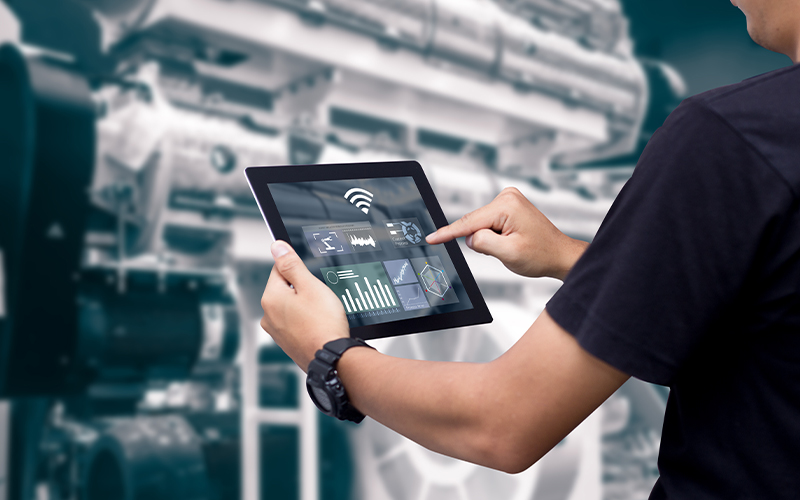Healthcare
Elevating healthcare consumer experience
Did you know that the time spent waiting for a doctor’s appointment at the clinic costs each of us $43 per hour? Or that the healthcare industry is the fifth biggest in the United States, but ranks last among 25 leading industries in terms of simplicity of experience? Did you know that as per a Deloitte Insights survey, almost 80% of patients said that they wouldn’t go back to the same health care organization where they had had a bad experience? Or that over 28% of patients did not return because of a bad online interaction with the health care provider?
Be it the endless wait time at the clinics, stacks of paperwork, incomprehensible terminologies (e.g., co-pay, deductibles), or complicated insurance plans, the healthcare industry has always been under fire for lack of simplicity and personalization.
Consumers face issues with transparent and uniform pricing, easy understanding of product benefits, ease of paying bills and uncomplicated interactions with personnel, all of which are crucial for enhancing patient satisfaction. There also exists a lack of trust among all the stakeholders in healthcare. Patients don’t trust doctors or insurance companies to provide the right care, insurance providers and doctors are always at loggerheads over treatment options and payment. To add to it, systems and processes between stakeholders aren’t synced – which means that consumers have to fill the same forms multiple times or provide the same information several times during the course of their experience.
Moreover, consumers today are more discerning and have high expectations from products and services. Being internet savvy, they prefer to do their own research and have agency regarding any decision to do with their or their family’s healthcare journey.
After all, their benchmark for consumer experience are companies like Amazon and Uber who have set a high standard when it comes to customer service and buying experience (take Amazon's two-day shipping and Uber’s on-demand service, for example). Hence, they would like to be seen as healthcare consumers and not just “patients” in the literal sense of the word.
What are healthcare consumers really looking for?
As per a survey done by PwC, 79% of those surveyed said that customer experience was the most important factor influencing the purchase of a healthcare service after price and quality. Consumers look for personalisation, simplicity and seamless interactions in their experiences which allow them to take their own decisions and make them feel in-charge of the situation.
Hence, trust of the consumers can be rebuilt through personalized healthcare experiences
- Personalisation and inclusiveness: Networking and connecting* with all customers equally and being proactive in understanding their requirements
- Simplicity: Irrespective of how the internal systems operate, consumers need a seamless and efficient experience
- Less waiting times: Make the consumer feel that their time is valued
- Transparency and security: Being clear and honest about treatment options, financial implications and usage of personal information.
What is in it for the hospitals?
According to Accenture, healthcare providers who prioritize customer experience and fulfill their expectations are able to retain their customer base and grow their market share by attracting switchers. These providers are in a position to grow their revenues to 5-10 percent of their pre-COVID levels in a year’s time.
Health system CEOs also agree that being customer-centric is high priority for their organisations, and there is a huge effort being put into understanding the consumers' changing expectations. Many leading health providers are investing in technology*, to improve their interactions with customers.
What can the healthcare system do to bridge the gap?
COVID-19 had already forced the hand of providers to make overnight changes to their systems and operations. In order to make these systems more customer-centric, the first step would be to engage the customers by doing research, developing customer personas and understanding their journeys. Once the touchpoints are identified, then the systems, processes and technology can be redesigned to make the interventions and engagement with customers better, resulting in a higher customer lifetime value (CLTV).
Technology can be leveraged to develop user-friendly platforms and self-service tools. The availability of different technologies like big data, artificial intelligence, and the Internet of Things has provided the healthcare industry with the tools to implement a customer-centric approach.
Having an omnichannel strategy enables a seamless experience for customers who want to engage through social media, self-registration kiosks, email, chat, or phone calls. Networking and connecting* disparate systems using data integration technologies is another way to provide a seamless experience for consumers.
Personalisation in healthcare can help in predicting health risks and providing round-the clock assistance for patients. By chatting with bots about their symptoms, customers can be linked to the right doctors. Technology is enabling healthcare providers to achieve hyper-personalization which in turn has led to increased loyalty and better profit margins.
Virtual care options are here to stay. What rapidly expanded due to the pandemic, is now desired immensely by consumers, 64% of whom have experienced virtual care and would like it to stay. Whether it is live assistance through voice or video chat solutions, tele-medicine or co-browsing solutions, live healthcare assistance is the need of the hour especially for those unable to travel and needing urgent care.
The Internet of Things and the collection and usage of patient data in an appropriate manner can help inform and educate patients about their diagnosis and treatment options leading to greater transparency. It can also provide valuable insights to accurately predict risks, provide diagnosis of ailments, solutions, cure and care of life-threatening diseases etc. This approach is leading to an elevated customer experience in healthcare.
It is important to note that all these technologies cannot exist without human interaction, which is essential for improving the customer experience in healthcare. They help provide support to already stretched healthcare personnel to enable them to focus on more complex customer requirements. They enable speed, accuracy, convenience and efficiency in dealing with consumers, thus increasing customer satisfaction while making the healthcare personnel’s life a little easier.
In conclusion…
Consumers who had put off their healthcare needs during the pandemic are now set to return, seeking improved customer experience in healthcare. Who they return to will be dependent on how much of a priority is given to a customer-centric approach. While most trends in elevating consumer experience revolve around technology, one cannot forget that human interaction is key to all of it. While the human touch cannot be replaced by technology, it can support and enable the same. The seamless connection between technology and human connection is what will enable an elevated consumer experience in the healthcare industry.
* For organizations on the digital transformation journey, agility is key in responding to a rapidly changing technology and business landscape. Now more than ever, it is crucial to deliver and exceed on organizational expectations with a robust digital mindset backed by innovation to improve customer experience in healthcare. Enabling businesses to sense, learn, respond, and evolve like a living organism, will be imperative for business excellence going forward. A comprehensive, yet modular suite of services is doing exactly that. Equipping organizations with intuitive decision-making automatically at scale, actionable insights based on real-time solutions, anytime/anywhere experience, and in-depth data visibility across functions leading to hyper-productivity, Live Enterprise is building connected organizations that are innovating collaboratively for the future.






